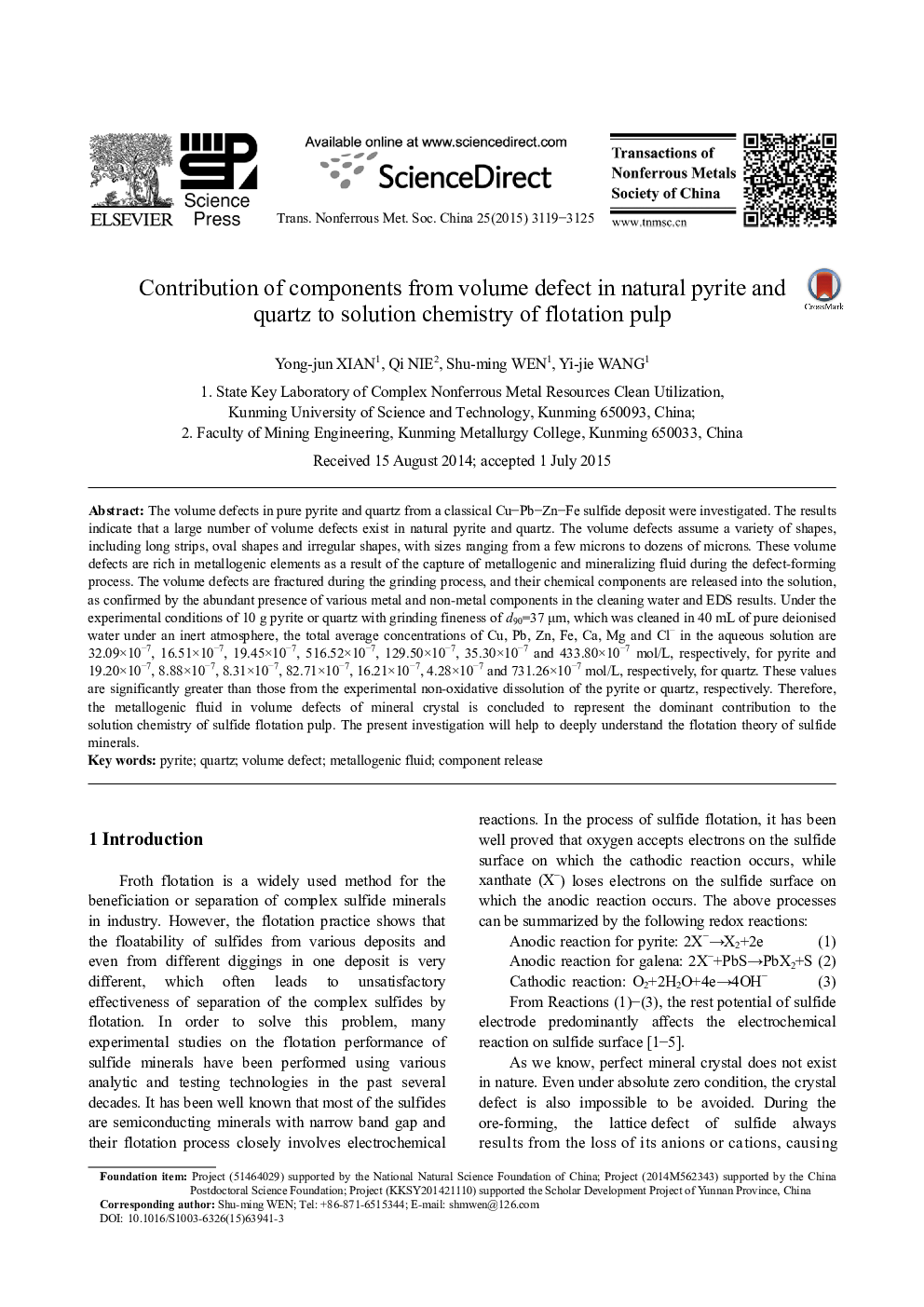| Article ID | Journal | Published Year | Pages | File Type |
|---|---|---|---|---|
| 1635725 | Transactions of Nonferrous Metals Society of China | 2015 | 7 Pages |
Abstract
The volume defects in pure pyrite and quartz from a classical Cu-Pb-Zn-Fe sulfide deposit were investigated. The results indicate that a large number of volume defects exist in natural pyrite and quartz. The volume defects assume a variety of shapes, including long strips, oval shapes and irregular shapes, with sizes ranging from a few microns to dozens of microns. These volume defects are rich in metallogenic elements as a result of the capture of metallogenic and mineralizing fluid during the defect-forming process. The volume defects are fractured during the grinding process, and their chemical components are released into the solution, as confirmed by the abundant presence of various metal and non-metal components in the cleaning water and EDS results. Under the experimental conditions of 10 g pyrite or quartz with grinding fineness of d90=37 μm, which was cleaned in 40 mL of pure deionised water under an inert atmosphere, the total average concentrations of Cu, Pb, Zn, Fe, Ca, Mg and Clâ in the aqueous solution are 32.09Ã10â7, 16.51Ã10â7, 19.45Ã10â7, 516.52Ã10â7, 129.50Ã10â7, 35.30Ã10â7 and 433.80Ã10â7 mol/L, respectively, for pyrite and 19.20Ã10â7, 8.88Ã10â7, 8.31Ã10â7, 82.71Ã10â7, 16.21Ã10â7, 4.28Ã10â7 and 731.26Ã10â7 mol/L, respectively, for quartz. These values are significantly greater than those from the experimental non-oxidative dissolution of the pyrite or quartz, respectively. Therefore, the metallogenic fluid in volume defects of mineral crystal is concluded to represent the dominant contribution to the solution chemistry of sulfide flotation pulp. The present investigation will help to deeply understand the flotation theory of sulfide minerals.
Related Topics
Physical Sciences and Engineering
Materials Science
Metals and Alloys
Authors
Yong-jun XIAN, Qi NIE, Shu-ming WEN, Yi-jie WANG,
